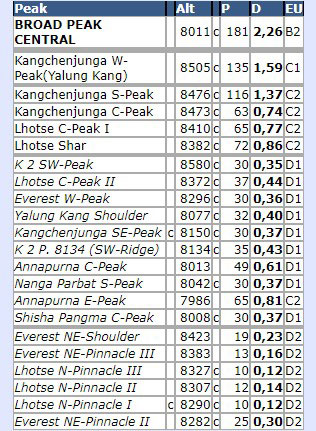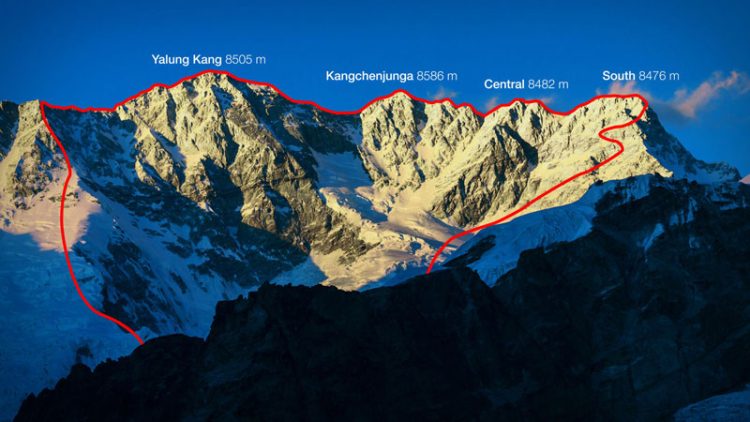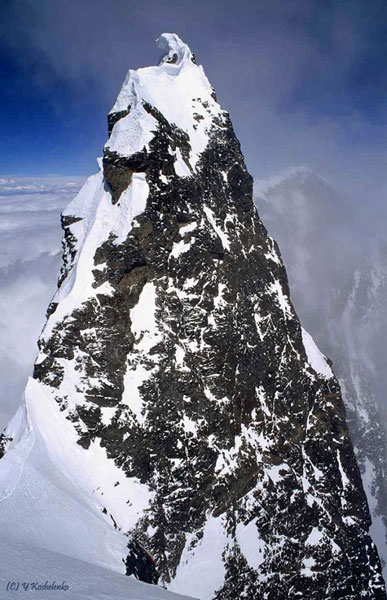Nepal’s Department of Tourism is set to add six more secondary peaks, Kanchenjunga and Lhotse, to the country’s list of eight-thousanders. The department has already listed six “new” eight-thousanders on its Nepal Peak Profile website.
Now it will try to get the new list approved by tour companies, the Nepal Mountaineering Association, and will promote these peaks at international forums.
This is not exactly news. Two years ago, the department cited the opinion of a number of local experts who proposed four additional peaks of Kanchenjunga to the list of eight-thousanders – Yalung Khang (8,505 m), Yalung Khang West (8,077 m), Kanchenjunga Central (8,473 m) and Kanchenjunga South (8,476 m), as well as two additional points on the ridge of Lhotse – Lhotse Middle (8,410 m) and Lhotse Shar (8,400 m).
However, it is generally recognized that Nepal has only eight peaks above 8,000 meters. All the rest are just secondary peaks. The website 8000ers.com shows that there are even more secondary peaks than the ones mentioned by the Nepal Tourism Department. Everest and Annapurna also have secondary peaks above 8,000 m. K2 and Nang Parbat in Pakistan have such peaks, as does the central peak of Shishapangma in China.
Since 2023, Nepalese experts have been calling on the International Mountaineering and Climbing Federation (UIAA) to recognize new eight-thousanders. According to The Kathmandu Post, they are still waiting for a response from the UIAA. However, in October 2023, the UIAA made its position clear, and it is not what the Nepal Tourism Department had hoped for.

The UIAA pointed out that the crux of the dispute is whether mountains are summits or peaks. The 14 eight-thousanders are 14 summits, regardless of how many secondary and tertiary summits they have.
There is no consensus on what exactly distinguishes a summit from a peak. The UIAA sought advice from the Mountain Research Commission of the International Geographical Union and experts.
They took into account topographic features, historical context, the interests of local communities and the government of Nepal, the UIAA’s previous experience in defining alpine summits over 4,000 meters, and the “spiritual” aspects of individual cases.
The criteria for summits over 4,000 meters in the Alps require that the summit be distinctive and sufficiently visible and separate from the main summit of the massif. This is necessary, but not sufficient.
For example, the minor peaks of Kanchenjunga are visible and clearly defined, but the UIAA experts took into account the meaning of the Sikkimese name Kanchenjunga, meaning “Five Treasures of the Great Snow.” “It is clear that the local population considers these five peaks to be one mountain,” the UIAA concluded. The same applies to Lhotse Shar and Lhotse South, which “are considered part of a larger mountain range.”

The UIAA adds that the mountaineering community generally accepts the classic classification of 14 eight-thousanders.
Nepal notes that the campaign is aimed at promoting tourism and developing the mountaineering expedition industry. If international recognition is achieved, Nepal could expect increased tourism revenue as climbers buy permits for additional peaks, The Kathmandu Post reports.

The mentioned minor peaks are already open to climbers. However, the permit for the main summit does not include the minor peaks and does not even provide a discount for a package tour. Horia Colibasanu from Romania and Peter Hamor from Slovakia abandoned their plan to climb from Kangchenjunga to Yalung Khan in 2022, so as not to pay for climbing the minor peak as a separate climb.
It is unclear whether expedition organizers will want to commercialize these minor peaks. The route to them includes technically difficult sections. Ascents of Lhotse Shar and Lhotse Middle have become mountaineering epics of sorts, but neither is suitable for guided clients.
Climbing difficult and expensive minor peaks is not yet popular among record-breakers and social media celebrities. Marketers of Nepalese tour companies face a non-trivial task.
Source: alp.org.ua

